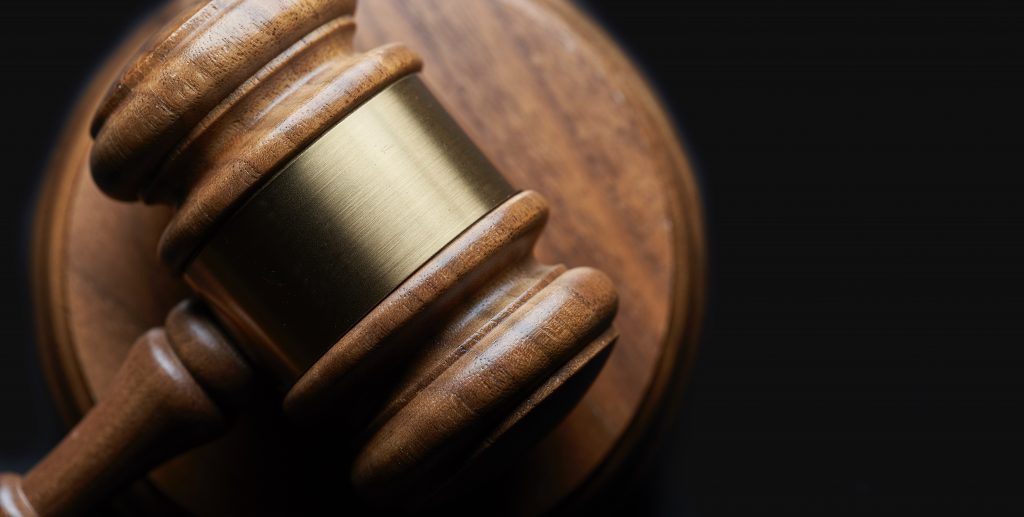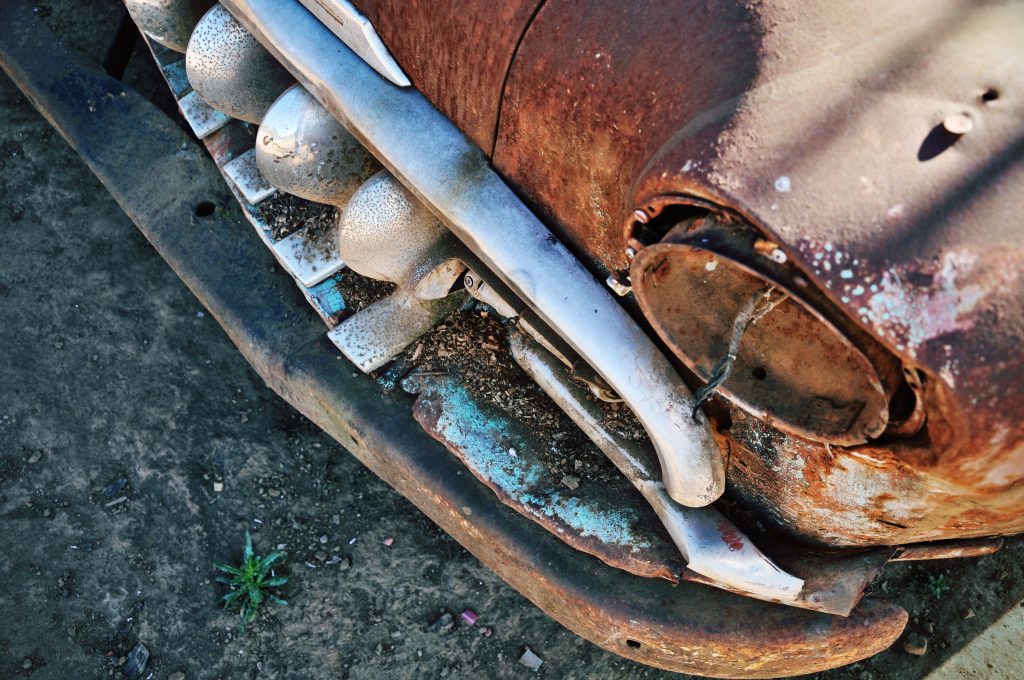 When someone is injured on the job, sorting out liability can be complex. It can be doubly so when a prisoner is temporarily released so he or she can work and is subsequently injured on a job that was approved by the prison system and the sheriff managing that prison, but completely run by a private party. In such a situation, it will take an excellent lawyer to sort out the liability issues and advise whether a lawsuit is worth bringing. So, who is liable for injuries on a work release program?
When someone is injured on the job, sorting out liability can be complex. It can be doubly so when a prisoner is temporarily released so he or she can work and is subsequently injured on a job that was approved by the prison system and the sheriff managing that prison, but completely run by a private party. In such a situation, it will take an excellent lawyer to sort out the liability issues and advise whether a lawsuit is worth bringing. So, who is liable for injuries on a work release program?
Sheriff Mike Tubbs found himself named in a lawsuit by an inmate who was injured in just such a situation. Ronnie Thomas was a prisoner in a jail in Morehouse Parish, Louisiana when he was approved for work release. His work release was assigned to the waste management department, where he worked as a “hopper” on the back of a garbage truck. He would jump off the back at each stop and grab the trash and throw it into the truck. During one of his jumps he fell and was injured. He sued several defendants, including Sheriff Tubbs, for their failure to provide a safe work environment. The trial court dismissed the case after the Sheriff filed a motion for summary judgment, arguing that he owed Mr. Thomas no duty to provide a safe work environment. The trial court held that Mr. Thomas was an employee of the waste management company and thus his only remedy was workers’ compensation. Mr. Thomas appealed, but the Louisiana Second Circuit Court of Appeal affirmed the dismissal.
The work release program that is run by the Morehouse Parish jail requires that the prisoner fill out an application for a job that seems suitable. In this case, Mr. Thomas applied for a job with the Morehouse Parish Police Jury, who reviewed his application and determined that he could work for the waste management company, Morehouse Parish Solid Waste, which is a third-party company. He was then assigned duty as a “hopper” by the company. He was injured in the course of his employment. According to the Court of Appeal, an employee’s exclusive remedy when injured in the course of his employment is workers’ compensation. However, Mr. Thomas argued that his situation was unique because he was a prisoner and out only due to the work release program. In his view, the sheriff was also responsible because he had assigned him to work, arranged what hours he would work, and was the one who negotiated how much he would be paid. He also pointed out that he received his payment through the inmate banking system. Thus, he argued that this level of participation by the sheriff also bound the sheriff with a duty of care to provide a safe work environment. The trial court and the Court of Appeal did not agree. They pointed to substantial case precedent for the settled principle in Louisiana that when a prisoner is released through a work release program they are an employee of the private company that provides employment, and that private employer enjoys immunity provided by the workers’ compensation program. The factual situation, wherein the prisoner applies for a job and is solely supervised by the employer during the release period, also backed up this finding,
 When representing clients, attorneys walk a fine line between providing adequate services for their clients and being potentially sued by their clients for legal malpractice. While there are legitimate cases of malpractice among attorneys, there are also allegations of malpractice that simply lack merit and are based upon anger from a dissatisfied client.
When representing clients, attorneys walk a fine line between providing adequate services for their clients and being potentially sued by their clients for legal malpractice. While there are legitimate cases of malpractice among attorneys, there are also allegations of malpractice that simply lack merit and are based upon anger from a dissatisfied client.  Louisiana Personal Injury Lawyer Blog
Louisiana Personal Injury Lawyer Blog


 When you think of an interrogation, you may think of a cold, plain room. You can imagine the two-way mirror and the rough metal chairs. You’re probably picturing some menacing looking criminal across from a police officer. It’s likely a high-pressure situation, and one party clearly holds most of the power. The police officer is calling the shots, asking all of the right questions, and knows all of the protocols. But what if it was another officer sitting across from them in the interrogation room?
When you think of an interrogation, you may think of a cold, plain room. You can imagine the two-way mirror and the rough metal chairs. You’re probably picturing some menacing looking criminal across from a police officer. It’s likely a high-pressure situation, and one party clearly holds most of the power. The police officer is calling the shots, asking all of the right questions, and knows all of the protocols. But what if it was another officer sitting across from them in the interrogation room? Litigation must come to an end so that parties to a lawsuit can go on with their normal lives. The court system also needs to move on to assist others in settling their disputes. This is a fundamental concept of our justice system. This also encourages courts to deal with cases in an efficient manner so that cases should not drag on unnecessarily. There are several ways in which cases can come to an end. One way is through abandonment. If you file a lawsuit and do nothing about it until three years, that lawsuit will be considered abandoned. In this case, the Fifth Court of Appeal of Louisiana considered a situation where this rule applies.
Litigation must come to an end so that parties to a lawsuit can go on with their normal lives. The court system also needs to move on to assist others in settling their disputes. This is a fundamental concept of our justice system. This also encourages courts to deal with cases in an efficient manner so that cases should not drag on unnecessarily. There are several ways in which cases can come to an end. One way is through abandonment. If you file a lawsuit and do nothing about it until three years, that lawsuit will be considered abandoned. In this case, the Fifth Court of Appeal of Louisiana considered a situation where this rule applies. State of Emergency conditions and evacuations seem to have become increasingly more common in this state over the years. Floods, hurricanes, and other extreme weather conditions can force a whole neighborhood to relocate for a few weeks. At times the evacuation protocols remain voluntary, meaning you may stay in your home at your own risk. Residents choose to weather the storm for a number of reasons, be it to avoid an expensive relocation or to protect their property from looters. Whatever the reason you stay behind, be aware that a State of Emergency prompts law enforcement to be more vigilant in their safety patrols.
State of Emergency conditions and evacuations seem to have become increasingly more common in this state over the years. Floods, hurricanes, and other extreme weather conditions can force a whole neighborhood to relocate for a few weeks. At times the evacuation protocols remain voluntary, meaning you may stay in your home at your own risk. Residents choose to weather the storm for a number of reasons, be it to avoid an expensive relocation or to protect their property from looters. Whatever the reason you stay behind, be aware that a State of Emergency prompts law enforcement to be more vigilant in their safety patrols. Trials are decided solely upon the evidence presented. A judge cannot read a book on the subject, or do extraneous research on the internet, to aid her decision-making process. In this case, the Defendant claimed that the judge did just that, by calling a city official to confirm some data. The appellate court thought otherwise. So, what do you do when you feel as if the Judge made a decision unfairly?
Trials are decided solely upon the evidence presented. A judge cannot read a book on the subject, or do extraneous research on the internet, to aid her decision-making process. In this case, the Defendant claimed that the judge did just that, by calling a city official to confirm some data. The appellate court thought otherwise. So, what do you do when you feel as if the Judge made a decision unfairly? In the Parish of Plaquemines in Louisiana, the oyster business can be quite profitable. Anywhere in the state, land can be a method of maintaining a person’s livelihood, whether it be through oil, tourism, or even an oyster lease. When a person with valuable land passes away, especially if that person is your relative, you may be curious as to how the death will affect claims to the land and its profits. One family found out when the courts were forced to interpret the law of community property as it relates to oyster leases.
In the Parish of Plaquemines in Louisiana, the oyster business can be quite profitable. Anywhere in the state, land can be a method of maintaining a person’s livelihood, whether it be through oil, tourism, or even an oyster lease. When a person with valuable land passes away, especially if that person is your relative, you may be curious as to how the death will affect claims to the land and its profits. One family found out when the courts were forced to interpret the law of community property as it relates to oyster leases.  When someone is injured on the job, sorting out liability can be complex. It can be doubly so when a prisoner is temporarily released so he or she can work and is subsequently injured on a job that was approved by the prison system and the sheriff managing that prison, but completely run by a private party. In such a situation, it will take an excellent lawyer to sort out the liability issues and advise whether a lawsuit is worth bringing. So, who is liable for injuries on a work release program?
When someone is injured on the job, sorting out liability can be complex. It can be doubly so when a prisoner is temporarily released so he or she can work and is subsequently injured on a job that was approved by the prison system and the sheriff managing that prison, but completely run by a private party. In such a situation, it will take an excellent lawyer to sort out the liability issues and advise whether a lawsuit is worth bringing. So, who is liable for injuries on a work release program? There is no shortage of frivolous lawsuits. As a result, courts have developed many different ways to nip these sorts of lawsuits in the bud. One way is by allowing defendants to file an exception of no cause action, which is essentially a request that asks the court to drop the plaintiff’s lawsuit because there is no factual support to justify the lawsuit. In the case below, the plaintiff truly believed she was wronged by her employer, but because the facts she provided in her lawsuit did not support a valid claim, her lawsuit was ultimately denied. So, how can you avoid your lawsuit being dismissed by no cause of action in Louisiana?
There is no shortage of frivolous lawsuits. As a result, courts have developed many different ways to nip these sorts of lawsuits in the bud. One way is by allowing defendants to file an exception of no cause action, which is essentially a request that asks the court to drop the plaintiff’s lawsuit because there is no factual support to justify the lawsuit. In the case below, the plaintiff truly believed she was wronged by her employer, but because the facts she provided in her lawsuit did not support a valid claim, her lawsuit was ultimately denied. So, how can you avoid your lawsuit being dismissed by no cause of action in Louisiana?  Witnesses can be critical to winning a personal injury lawsuit after an auto accident. Without an impartial third party to attest to what happened, the case can devolve into he said/she said situation. Even worse, when one party is mentally unable to recall the events of the incident, the outcome becomes even more uncertain. Some may be tempted to think their case becomes a slam dunk after that. With one party not even sure of the facts, the other side has to prevail, right?
Witnesses can be critical to winning a personal injury lawsuit after an auto accident. Without an impartial third party to attest to what happened, the case can devolve into he said/she said situation. Even worse, when one party is mentally unable to recall the events of the incident, the outcome becomes even more uncertain. Some may be tempted to think their case becomes a slam dunk after that. With one party not even sure of the facts, the other side has to prevail, right?